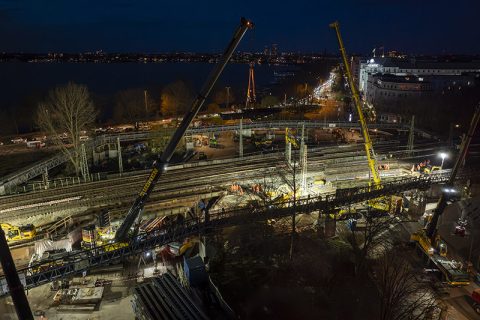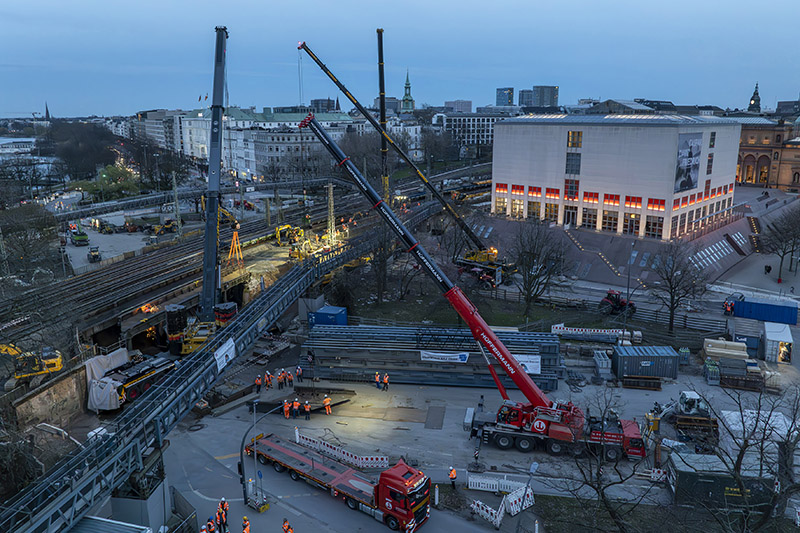
Mega-cranes reshape Hamburg’s railway landscape
Hamburg’s Alster River is undergoing a monumental transformation. Engineering giants are rising from the water’s edge, not mythical creatures, but colossal cranes. A complex operation is underway to replace the two ageing railway bridges, “Ferdinandstor” and “An der Alster”, while ensuring minimal disruption to the bustling network below. This intricate dance between preservation and progress promises to reshape the Hamburg skyline.
Crane service provider Thömen is on-site with an LTM 1350-6.1 and an LTM 1650-8.1, to replace the two flyovers connecting the nearby main railway station with the Hamburg-Altona via five major railway lines.
Deutsche Bahn has implemented a meticulous plan to minimize disruption to the 900 daily trains that use these bridges. Crane specialist Thömen, utilising a team of four Liebherr mobile cranes, is working around the clock to disassemble the old bridges, ensuring a smooth transition to the new infrastructure. “Our job here is to excavate the existing bridges. Due to the tight time window, we also work at night. The cranes are in operation 24 hours a day, seven days a week,” explains Steffen Wilken, a sales representative at Thömen.
Cranes in tight spaces
Replacing railway bridges in a bustling city centre is no easy feat, and “Ferdinandstor” and “An der Alster” bridges presented a unique challenge – a lack of space! With limited room to manoeuvre the massive 650-tonne crane, the team at Thömen had to get creative.
“Due to the tight space conditions, we had to jack up the LTM 1650-8.1 very high. We supported it with excavator mats and base plates, so the ballast of the crane could swing over an existing bridge foundation 3.5 metres high,” explains Steffen Wilken.

Marc Kuebart, responsible for project planning, adds that an additional cable bridge had to be built beforehand, further restricting the crane’s workable area. Careful planning and meticulous execution were paramount.
The old bridges were dismantled in 60-tonne sections using a combination of lifting and cutting. Now, in the second phase, new 50-tonne auxiliary bridges are being installed.
These new auxiliary bridges will be positioned above the existing supports, allowing for their dismantling and the construction of new foundations for the replacement bridges – all while maintaining train traffic below. The intricate choreography of this project highlights the ingenuity required for large-scale engineering feats in urban environments.
You just read one of our premium articles free of charge
Want full access? Take advantage of our exclusive offer




